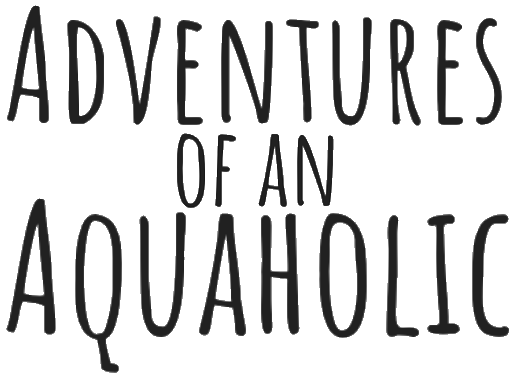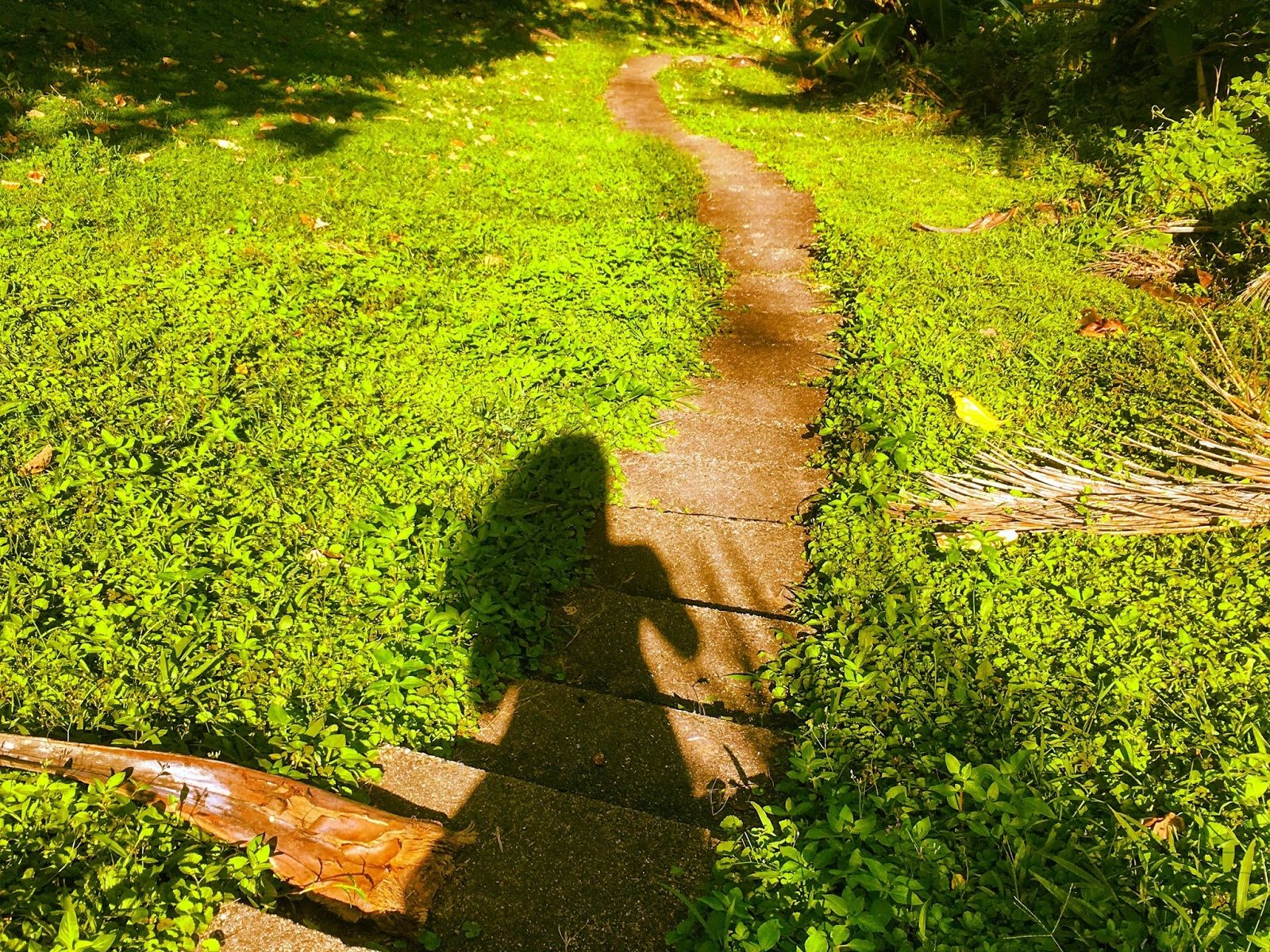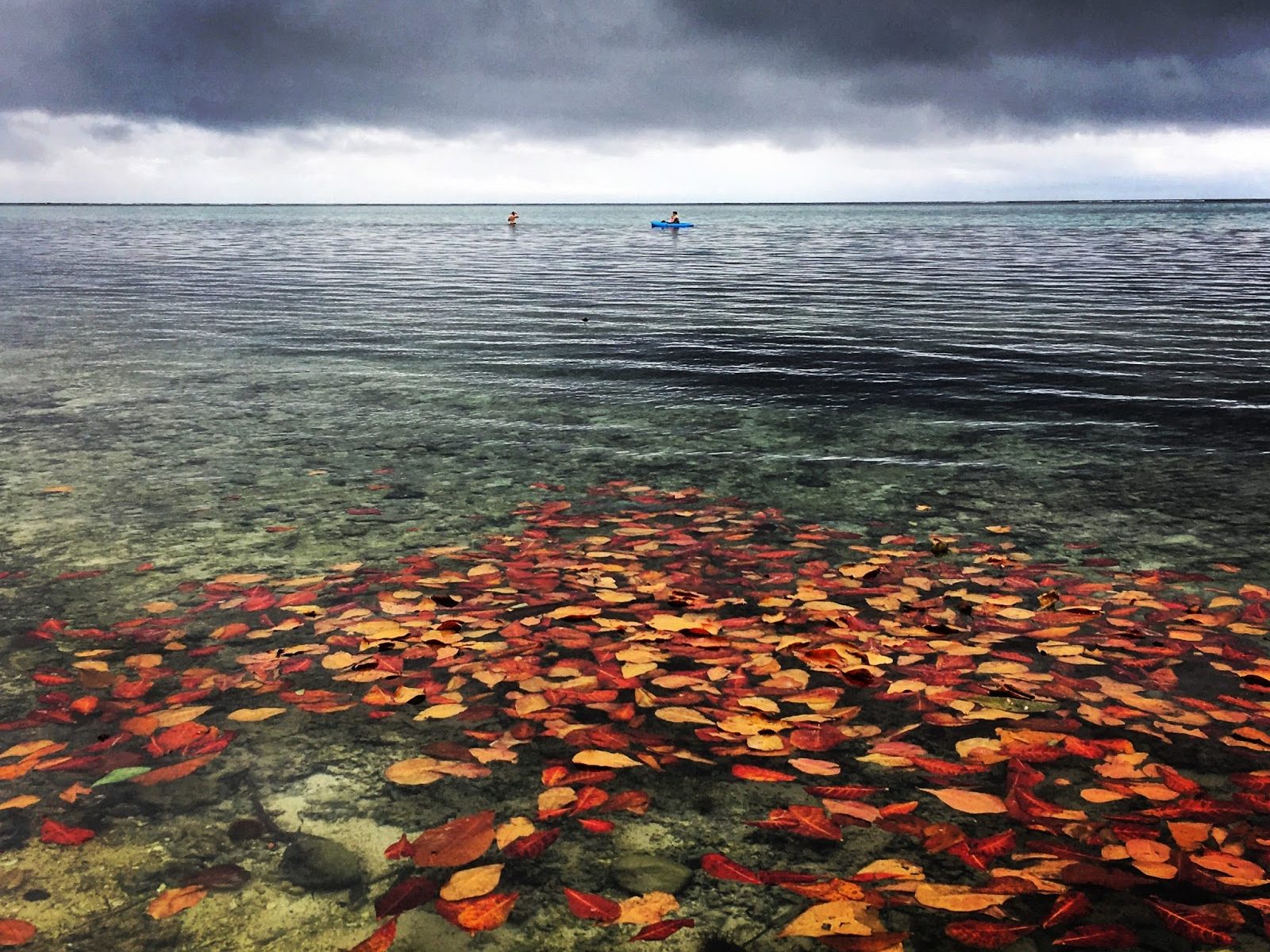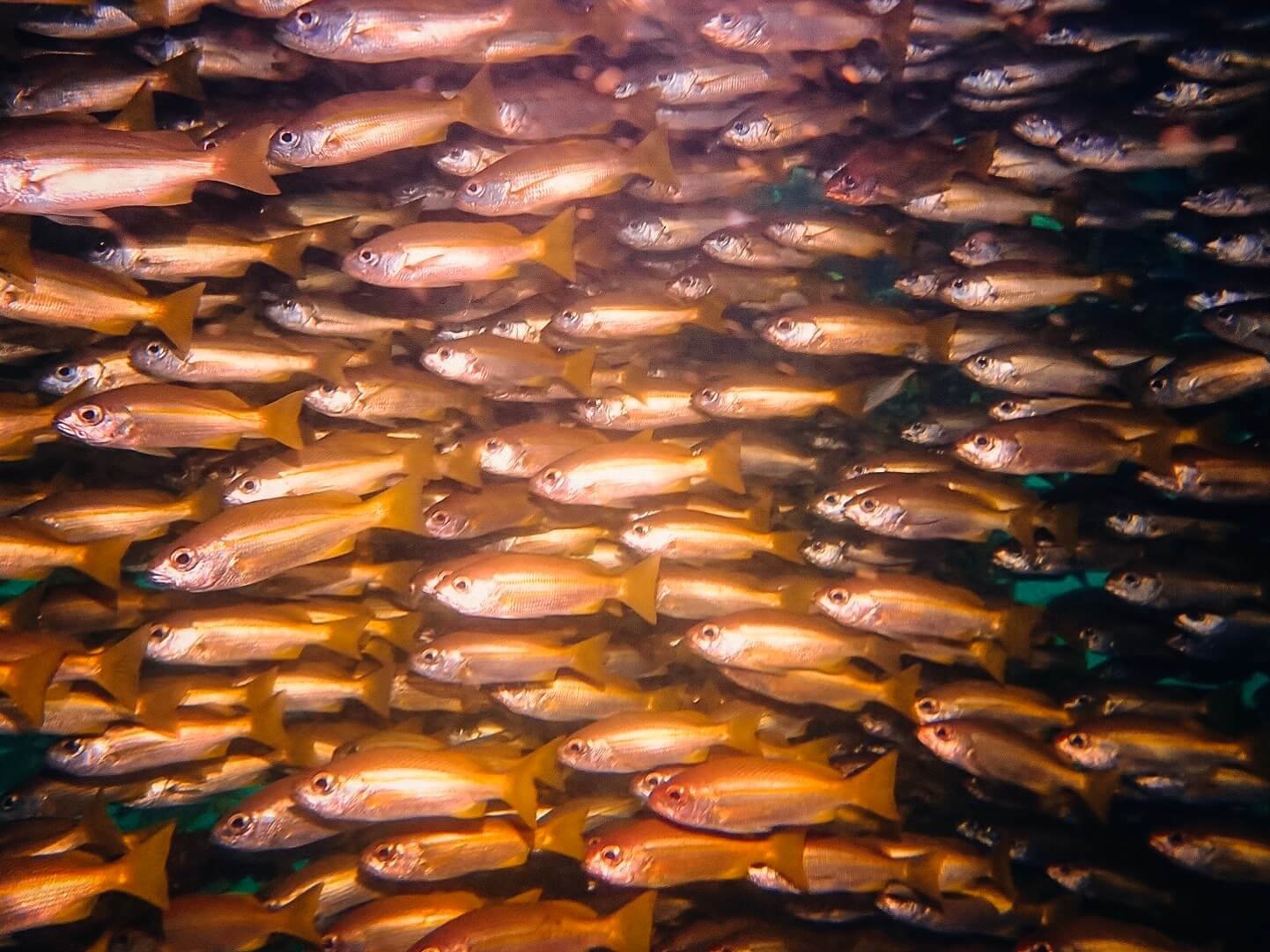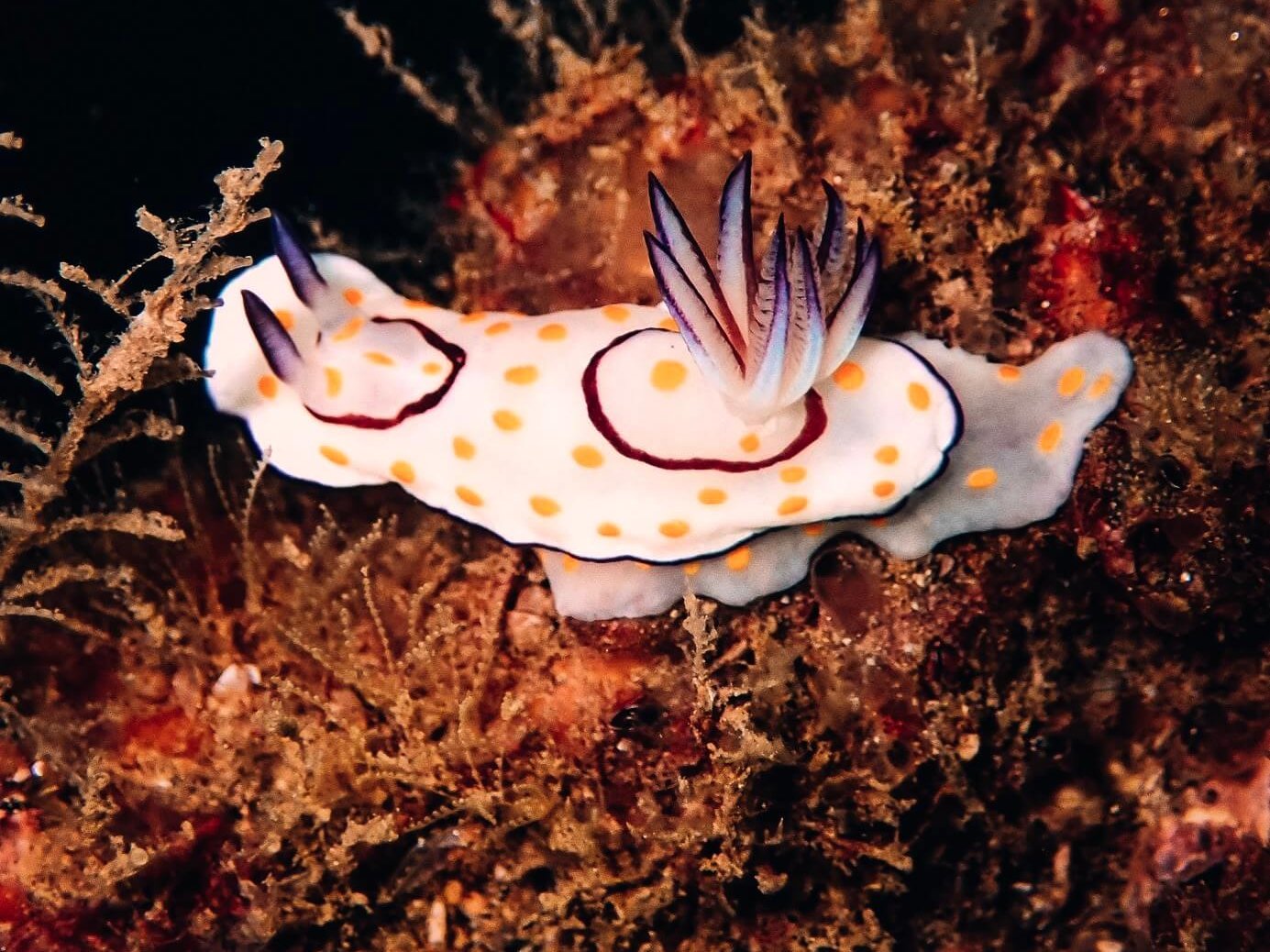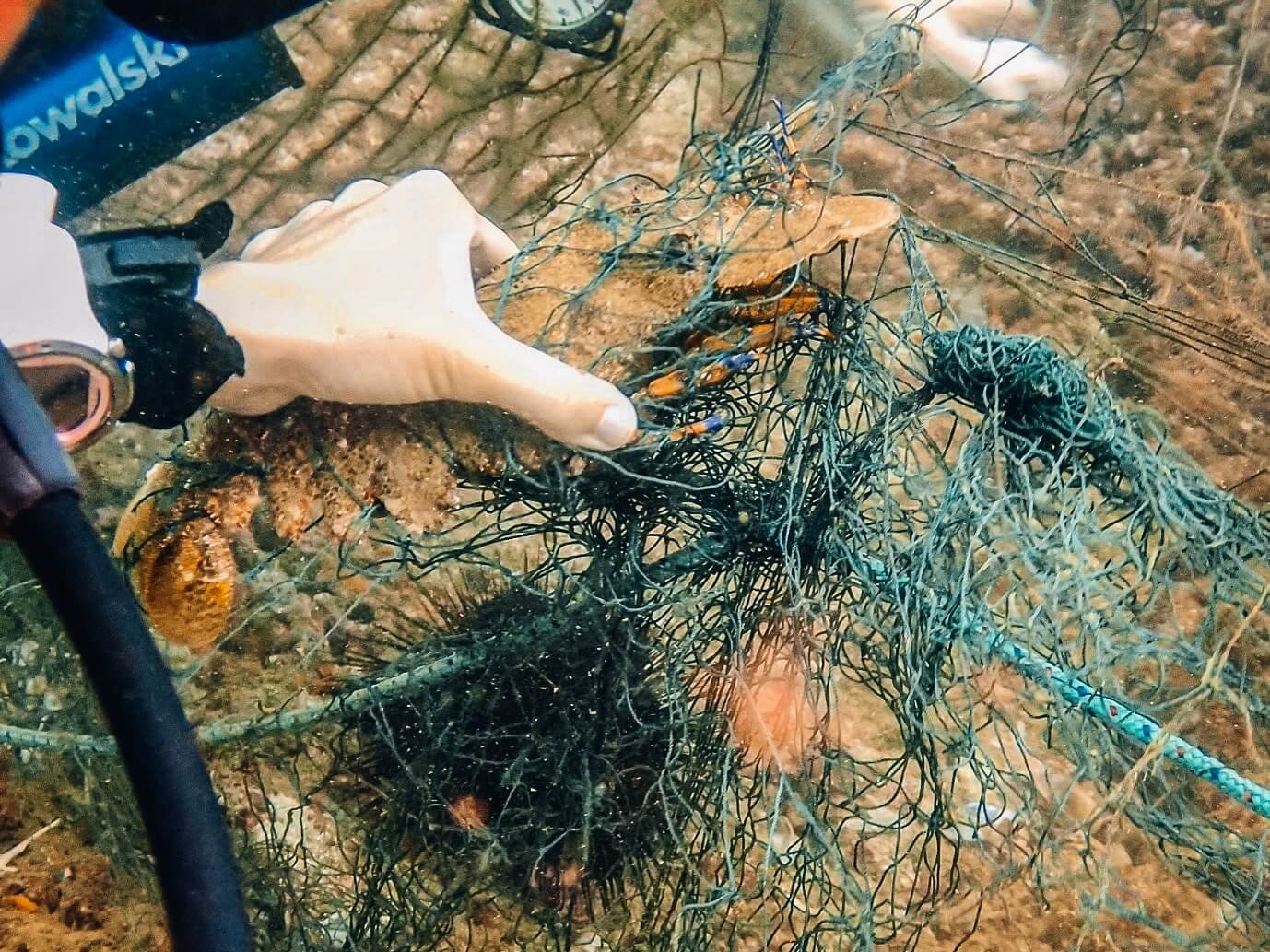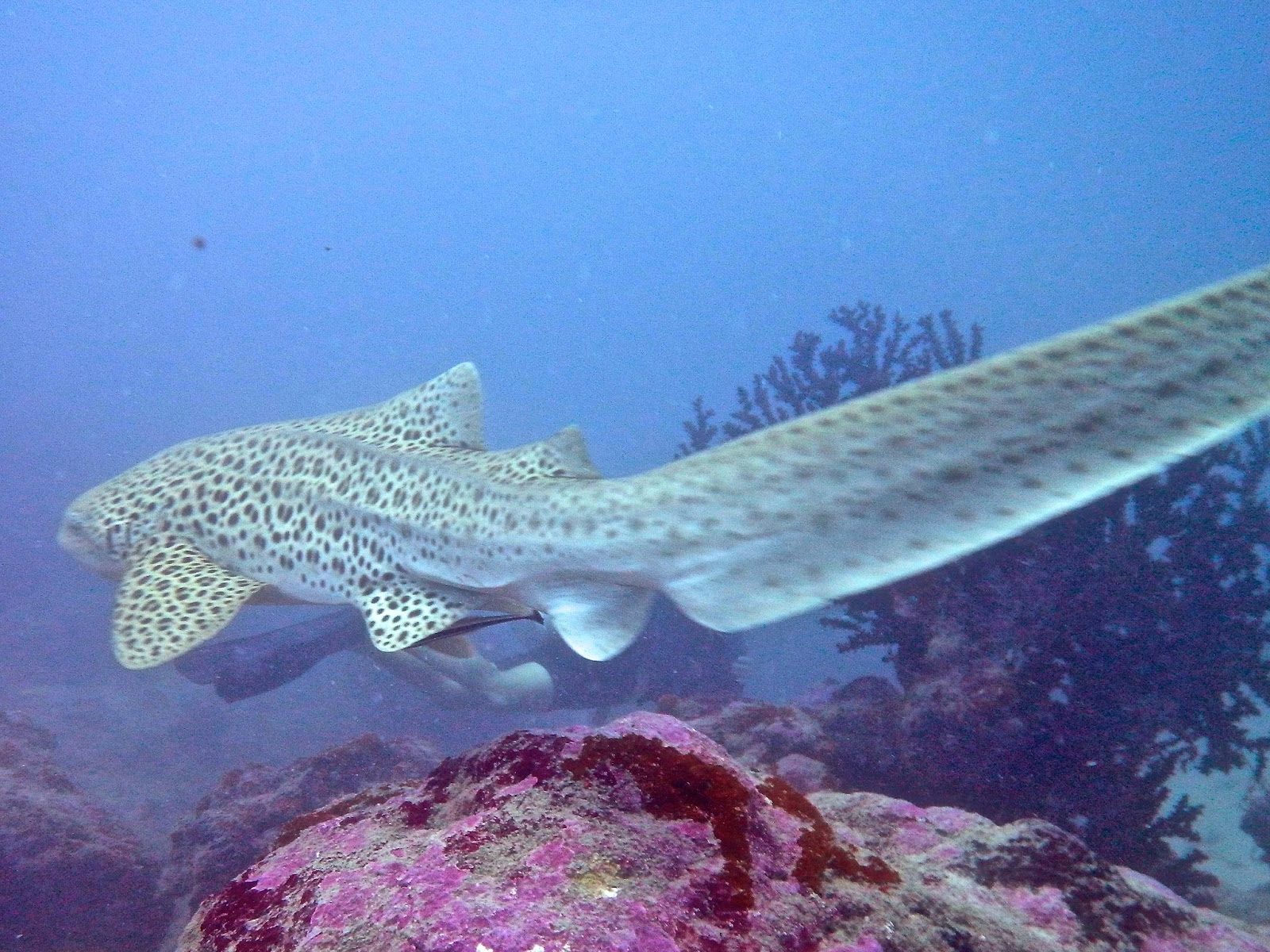
I estimate that I’ve been to around 130 dives sites in my life. That might not sounds like very many for as much diving as I do, but when you commit to living in one place for so many months, you really just visit the same few dive sites repeatedly. That has allowed me to get to know maybe half of those 130 dive site very intimately. Different dive sites have always been special for different reasons. Some have beautiful topography, some have water so crystal clear you would think you were in an aquarium, some have fun swim throughs, and some have animals that I absolutely adore getting to see. But I’ve always loved the variety, and as such, no single site has ever stood out to me enough to call a favorite. No site until I came here to Fiji.
Fletch and I initially came to Fiji to visit an old friend of his from Honduras. Aaron just happened to be about to leave, and when his boss heard that Fletch and I were both dive instructors, asked if we’d be interested in the position. So we came to visit and to check out the job. As soon as we stepped off the plane into the hot, muggy summer air, Aaron texted to ask if we wanted to go diving when we made it to the resort. I didn’t end up diving with them that first day, but the following day we went back to the channel for my first dive in Fiji.
I remember not being impressed. We had just spent a year in Palau, where you could go underwater for ten minutes and see everything that you wanted to cross off your bucket list, from dozens of apex predators, to colorful little nudibranchs. Then we’d spent a couple weeks in the Philippines, where the macro life was phenomenal. I never fully appreciated the little tiny life until I went to the Philippines. Now here we were in Fiji, supposedly one of the nicest diving destinations in the world, and we were diving this sandy channel with hardly any coral and very limited visibility. We saw a couple zebra sharks at the end, but I was already out of bottom time by then and had to admire them from above. I realized that no place would probably ever compare to Palau.
Now that channel is my favorite site I’ve ever had the pleasure of diving. I’ve dove it at least every week these past six months, if not multiple times in a week, and I just love it more and more every time. It is sandy, and there is hardly any coral to speak of, and the visibility is limited, but all those conditions mean that the sharks love to hang out there. The zebra sharks are there every dive. They are nocturnal, and so come to the channel to sleep during the day. They are beautiful animals, and have these cheetah-like markings and long, elegant tails that they use to swim. Their little faces look like they’re constantly smiling. I’ve yet to dive the channel and not see the zebra sharks, sometimes only one or two, but sometimes nearly a dozen.
Zebra sharks get their name from the black and white stripes they have as juveniles, but as they mature, their markings change to resemble those of a leopard, meaning that they mistakenly get called leopard sharks on this side of the world. Where I’m from, a leopard shark is a different species entirely, one we don’t get on this side of the world. People are always trying to correct me when I say zebra shark, and I am in turn correcting them when they say leopard shark. To avoid confusion here, the species to which I am referring is the Stegostoma fasciatum.
As long as you are a calm diver, and they don’t sense your nervousness or excitement, they will let you get right up next to them. When I’m with guests, I will find a rock for everyone to hide behind, so that our big group of clumsy, bicycle-kickers doesn’t scare them away. When I’m with guests, I never condone touching anything. Marine life needs to be treated like the feral dog wandering the alleys. Yes it may be cute, but it is also likely scared of you and will defend itself if you go touching it when it doesn’t want to be touched. Tell people that something is not dangerous and suddenly all they want to do is get their hands all over it. Why is that? Sharks are either these fearsome beasts that everyone is scared to death of, or we have to go molesting them. The image of a James Bond girl riding the sea turtle in Thunderball comes to mind. I planted my face in my palm when I watched that recently. No wonder people have no respect for nature.
Too many people are immature and insensitive when it comes to interacting with wildlife, and so I don’t condone it with guests. But when you become an experienced and respectful diver, wildlife interactions are experiences you never forget. I had the chance to dive the channel without any guests several months ago, and so calmly went and approached a zebra shark, just to see what would happen. I settled down on the sand next to it. It’s breathing quickened for a moment, like it does when they are about to get up and swim away for having their peace disturbed, but then it seemed to decide it didn’t care. Its breathing slowed and it went back to its nap. I gingerly placed a hand just beside the ridge down its back, and it let me. We both just chilled there for a few minutes and sang Kumbaya. That was a magical moment for me. Our society has become so disconnected from nature, and even when we do try to experience nature, it is usually something we pay to do, then move along so the next person in line can snap their photos. That moment with the zebra shark was something real. (Said every travel blogger who ever had a moment).
Another dive, shortly after, I was with a student and we happened upon two zebras engaging in a bit of foreplay. The male was gently gnawing on the female’s tail. You may be raising an eyebrow in confusion when I say a shark was ‘gently gnawing.’ Sharks have rows and rows of hundreds of sharp, pointy teeth, right? Not the zebra sharks, at least not in the sense you’re envisioning. They just have little mouths with little tiny teeth the size of pin points that they use to crush crustaceans and shellfish. Anyway, I’ve only ever seen sharks engage in the naughty act on youtube, so I was mad excited to get to observe something in person that there is not much documentation on. I found a rock to wedge my student behind so she wouldn’t get swept away by the current, and we just sat and watched until we were low on air. This is what happens when you come diving with me. We stop and watch the sharks for the entire dive.
Then there are the guitarfish. They get to be about four meters long, and look like the evolutionary link between sharks and rays, with pectoral fins fused to their heads like a ray, but the tail end of a shark. They are easily spooked, and so it is difficult to get too close without them swimming away. If you can get close enough to see, they are not just grey, but have lovely white polka dots bordering the edges of their fins. The guitarfish, or shovel-nosed rays, usually hang out in the channel around low tide. I rarely ever see them during high tide.
Twice now in the channel I have seen a fully matured napoleon wrasse. He is such a beauty. My first sighting of him came several months into my being here, and only a short week after learning that all four of the napoleon wrasses at Blue Corner in Palau were gone. Blue Corner in Palau was a spectacular dive site, with a corner that jutted into the intersection of the Pacific Ocean and the Philippine Sea. It was a meeting ground for more species than I have ever seen in one place. On this reef lived four massive napoleon wrasses, who were used to seeing divers at the reefs and acted like trained puppy dogs. Divers used to feed them hard boiled eggs, which was discouraged, but everyone did it. I shouldn’t have, but one day I brought down a peeled rambutan, because that was at least something that might end up in the ocean on its own. One of the napoleon wrasses inhaled it, spat it out, inhaled it, spat it out, and repeated this chewing process until he finally decided that it was something worth eating, then went bumbling along on his merry way. Now I’ve always been led to believe that fish are dumb animals, and don’t have much in the way of memories. Why else would they talk about the memory of a goldfish? But a week later, I returned to Blue Corner, and I really couldn’t make this up. Napoleon wrasses have these very intelligent looking eyes; they will look at you and their eyes will follow you around. That same napoleon wrasse spotted me, and came swimming over, flapping his little pectoral fins all excited like a dog seeing his owner at the end of a work day. I reached out… I would never intentionally touch a fish like that because they say the oils on our hands can harm that slimy coating on their skin. But I reached out to wave at him, because sometimes I like waving at the animals as if that is a greeting they understand. I swear he swam his side along my hand. I sound like I’m making this up, don’t I?
It came as a real shock when I read on Facebook later on, after I was already in Fiji, that all of the napoleon wrasses at Blue Corner were gone. They are illegal to fish of course, due to their endangered status, but that doesn’t stop people from doing it illegally. They are worth a pretty penny on the black markets in Asia. Take an uneducated society and offer a person more than they would ever make in three or four years for one fish,** well, goodbye fish. Images were circulating around the interwebs of one of their heads resting on a lawn next to some local’s feet, and I felt just as sick as when we had to watch that Game of Thrones episode (SPOILER ALERT) in which they prop the direwolf’s head onto Robb Stark’s body. I went home crying that day over how cruel people could be. I felt silly for crying over some dumb fish, but it wasn’t just a dumb fish. They were friends. They were the closest things that Palau had to celebrities.
A short week after that devastating bit of news, I was diving the channel for the umpteenth time. I got certified in a reef check program here in Fiji, and during our class we learned about how there used to be several nesting grounds for napoleon wrasse in the area, but they have all been fished and are rarely seen anymore. So imagine my excitement when towards the end of the channel, the current was pulling us along, and there in the distance, I saw what looked to be a very large, turquoise-colored fish with a large bump on its head. I couldn’t believe my eyes, and was sure it was some illusion of the murky visibility. You’ve heard about mirages in the desert, well sometimes very bad visibility can have the same effect underwater. The thing swum closer, and sure enough, it was a fully gown, gorgeous napoleon wrasse. All I could do was point and scream into my regulator. My poor students must’ve thought I was having a seizure or something. Thank goodness I wasn’t teaching a rescue class.
I’ve only seen the big napoleon wrasse twice since, and a couple smaller, intermediate phased ones as well, but I know that they are there now. I spent a week rushing around telling everyone I could, everyone who might care to save a fish from being caught and put on the dinner table. I honestly felt really helpless doing so. What could I really do when it boiled down to it?
Not only is the channel filled with a breathtaking abundance of large species you might not see anywhere else, it is in an empty little corner of Fiji that no one dives. There are other areas of Fiji that are much more well known to divers, and I’m actually happy this place is not in the guide books. In my six months here, I have never had to share the channel, or any of our local sites, with another boat. Coming in I was told that, and it initially sounded nice. No boat traffic to worry about on ascents, and no other divers to run into underwater. I didn’t realize at the time just how freeing it would be. In Thailand, there were always half a dozen boats on any given dive site at any given time, and the same in Palau now with all the Chinese tourists pouring in. Sharing dive sites is just something I’ve gotten used to. Not having to share dive sites though, wow. The underwater world suddenly feels less like an amusement park or a zoo, and more like home. The channel especially, just feels really personal in a way that I can’t even describe. I suppose it’s like the difference between going to a well known national park like Yellowstone, vs just wandering the wilderness in your own backyard where no one ever goes. There’s a reason everyone goes to Yellowstone, you’re going to see a much bigger wow-factor, but you’re also going to be smothered by other tourists. Suddenly the other dive sites I’ve been diving all this time in Thailand, and then in Palau, all feel like tourists attractions. Pay the fee to enter, snap your pictures, and then move along so that the next person can do the same. This silly little channel here feels like home, if I could ever grow gills and call underwater a home.
I’m not going to mention the name of the resort where I am based, or the dive shop for which I work. There is something magical in that channel and I want it to stay that way. The boss and owner of the company has talked about starting his own shark dive there, and he definitely could, but I hope he doesn’t. That spot deserves more than to become a cheap, tourist thrill. Send me a message if you’re ever in Fiji and I’ll tell you where to go for a dive that will really blow you away.
**According to the WWF, napoleon wrasse is worth $250 – $300 per kg in China. They reach a size of up to 190 kg. The average Palauan makes $1200/month. You do the math.
